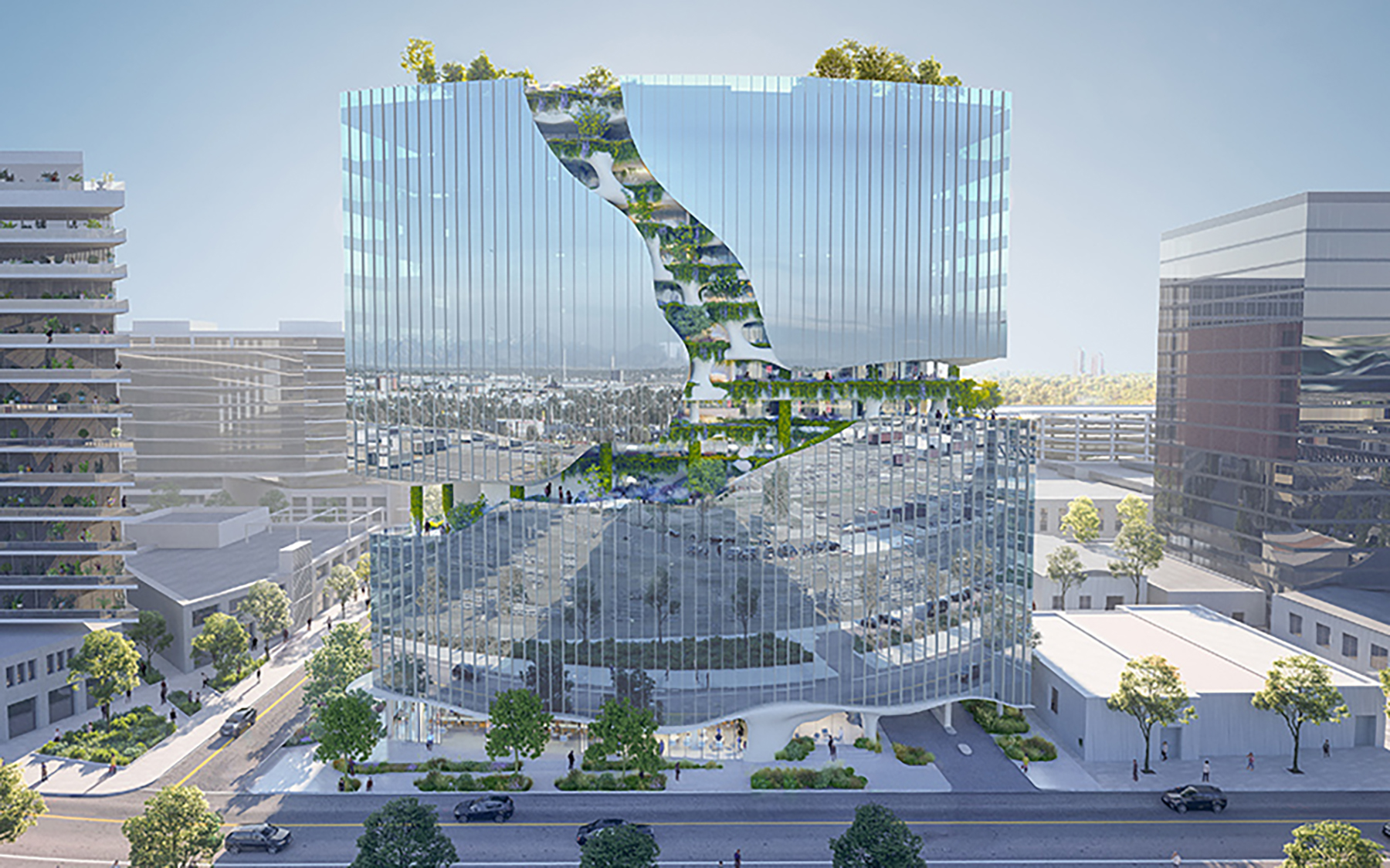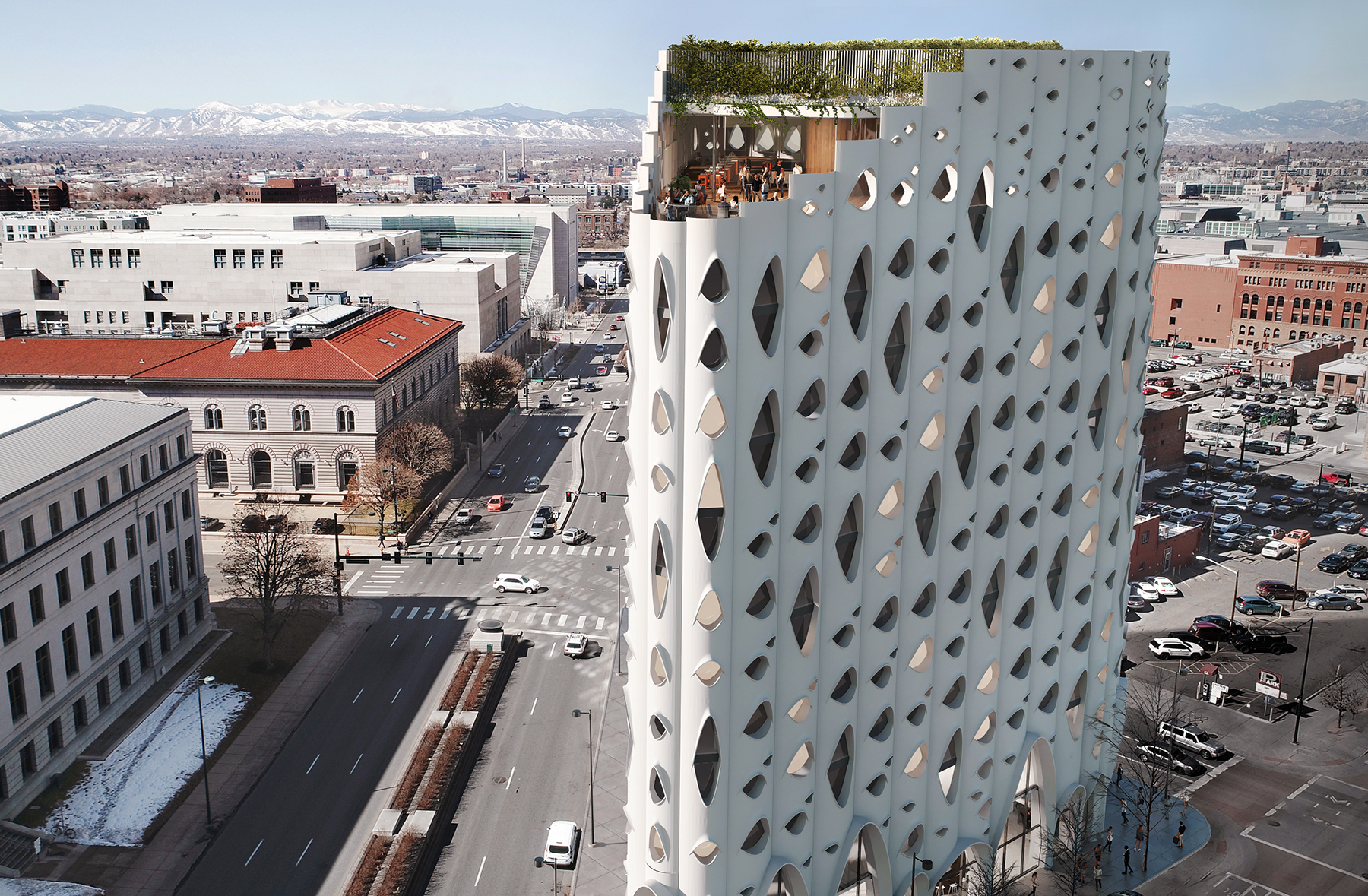By T.R. Witcher
The term biophilia was popularized by American biologist and author Edward O. Wilson to describe his theory that humans have an intense connection to the natural world and to living things, what Wilson referred to as “the connections that human beings subconsciously seek with the rest of life.”
It’s a theory that has inspired artists, architects, and engineers. A new exhibit at the Denver Art Museum, Biophilia: Nature Reimagined, which runs through Aug. 11, is organized into three themes based on the aspects of nature that most impact our well-being: natural analogs, which look at forms and patterns in the natural world that inspire artists and designers; natural processes, where designers seek to mimic natural phenomena; and topophilia, the propensity of people to feel connection toward specific places.

“We have developed an exhibition that examines how designers, architects, artists, and other creatives are trying to reconnect us with nature world through their work,” Darrin Alfred, the museum’s curator of architecture and design, says of the exhibit’s multidisciplinary roster of more than 80 works from 34 artists, architects, and designers. It features everything from chairs that resemble hydrangeas to a kinetic ceiling sculpture of flowers mimicking the way real-life flowers close to protect themselves.
Further reading:
- Indigenous society headquarters will highlight natural materials, biophilia
- Denver art installation promotes flood mitigation efforts
- Coral reefs are natural infrastructure, group declares
“In today’s world, where we spend so much time on our phones and live in densely populated urban centers,” says Alfred, “these creatives are making a concerted effort to remind us of the role of the natural world on our well-being.”
Denver is an apt place for such an exhibition because two high-profile buildings in the city, both opening this year, epitomize the emotional and aesthetic possibilities – as well as the engineering challenges – of designing buildings using Mother Nature as your muse.
The first project, One River North, an apartment tower that opened in April in the city’s booming River North neighborhood, features a glass curtain wall “cracked” through by biophilic vertical and horizontal canyons of terraced balconies and outdoor spaces (replete with waterfall and outdoor steps, allowing residents to traverse up the side of the building). The second project, Populus, bills itself as the first carbon-positive hotel in the United States. Its intricate facade resembles a grove of aspen trees – an iconic symbol of Colorado’s spectacular mountain scenery.
Carving a canyon through a building
The vivid, nature-inspired forms of each building required plenty of engineering know-how. With One River North, designed by MAD Architects (with Denver-based Davis serving as architect of record), the northwest facade’s “canyon” walls were made with precisely designed, prefabricated panels – with the sections ranging up to 48 square feet in size – composed of steel rebar and lath mesh, says Bruce Holleran, vice president of KHS&S, a specialty contractor known for its thematic approach and innovative wall systems and finishes. The company has completed rock work for projects ranging from Disney amusement parks to the Fontainebleau Hotel in Las Vegas.
The canyonlike facade created challenges for attaching the irregularly shaped panes of glass to the building. “They’re used to attaching those to the edge of our slab, but in some cases there’s not an edge of slab there,” says Austin Reese, P.E., project manager with Jirsa Hedrick Structural Engineers, the structural engineer for One River North. “If the slab has one of those locations with a chunk taken out, then there’s nowhere for that glass to attach to, and we would’ve had to coordinate adding little steel arms and things for that glass to attach to.”

In addition, the building catches a lot of wind, Reese says, which is resisted by the elevator core at the center of the building. To strengthen the core, Jirsa engineers embedded 3,000-pound steel link beams into the concrete walls over the elevator lobby – a reinforcing system common in the seismically active West Coast but new to Denver.
The tower’s floor system utilizes thin posttensioned concrete slabs, ranging in thickness from 8 inches to 48 inches in some places with a ton of posttensioned reinforcing, a system Reese describes as “like a rubber band system to really squeeze the concrete, which helps you kind of really go thinner and carry bigger loads.” The slabs also allowed the building to carry landscape loads, which were typically “at the edge of the building,” where the floors cantilever 10-12 feet beyond their supporting columns. “So you can imagine the floor slab sticks out 10 or 12 feet,” he adds, “and then we’re going to put a big 3,000-pound tree right on the edge of it.”
Mimicking a Colorado icon
Populus, meanwhile, is on a triangular site at the edge of Denver’s historic, City Beautiful-era Civic Center Park. The hotel is scheduled to open this summer. (Populus is also one of the project’s featured in the museum exhibit.) Studio Gang, the building’s designer, declined an interview request for this story. But according to the firm’s website, the “window shapes are informed by the characteristic patterns found on aspen trees (Populus tremuloides). As the trees grow, they shed their lower branches, leaving behind dark, eye-shaped marks on the papery bark of their trunks. The windows are further detailed to perform efficiently in the Denver climate. On the exterior, the ‘lids’ of each window stretch outward to shade the interior while also channeling rainwater.”
The tight confines of the site led the designer and engineers to “a uniquely shaped core rather than your standard rectangles,” says Chris O’Hara, P.E., founding principal of engineering firm Studio NYL. “The biophilic geometry is actually finding itself into the curvature of the elevator core and the stairs that are associated with it, and that helps us with the lateral stability of the overall building, but it also starts to play with exactly what our spans are.” The building wound up being just one bay around the entire perimeter of the core. There are only two columns that are within the interior of the building, he says.
“So it’s perimeter columns, everything straight to core. So obviously the core does the lateral, but the perimeter columns are also offset off the facade so that we can get a little bit of a cantilever to help minimize some of the bending and improve some of the punching shear of the concrete to keep these slabs as thin as humanly possible.”
Engineers investigated mass timber, but that would have added at least a foot of height per floor, which would have eliminated a floor of the building and threatened the project’s financial viability. So they focused on dialing in the right mix of concrete – particularly low-carbon cement admixtures and supplemental cementing materials such as fly ash.
The building is clad with glass fiber reinforced concrete, similar to precast concrete but a much finer mix. “It does give us the ability to create really unique geometries with a smooth finish,” O’Hara says.

The building envelope for Populus had to perform well to maximize the building’s low-carbon ambitions. “So we have (a) panelized weather wall, all outboard insulation, rain screen concept, but to take this cladding system and put it over the building,” O’Hara says. “We had to thermally break these, and rather than (as) in conventional buildings – where you see a thermally broken clip every, say, 24 inches on center – we went a different route and made the panels use the strength and inherent capabilities of the GFRC and span floor to floor, so that we’re only anchoring relatively infrequently.”
Those anchors, he adds, use “a fiber reinforced resin pad to offset the connections and keep all the conductive parts of the connections of the cladding completely outside the envelope.” This meant the exterior panels, two stories tall instead of the typical one, could be hung off the facade using a “towel bar concept” that allowed installers to drop the panels in place. “The weight of the panel in its geometry is able to bear on the towel bar and hang, and then it slides over pins at the base so that they’re laterally stable at the base,” O’Hara says.
Biophilia is more than just facile references to plants and trees, and it’s also more than trying to check off a list of “sustainability” features. It’s reminding us that even the built environment is a part of nature – that what is being sustained is not the building but us. “I think it’s finally becoming much more mainstream,” Alfred says. “And there’s so many different ways to express these ideas or manifest these ideas.”
For O’Hara, biophilia is about emotion – transforming the expectations of a concrete building like Populus from cold to warm and open. “Obviously, if it’s not clear, I’m a huge fan of architecture. And, really, I’m an engineer, but my passion is architecture and how we serve that as engineers,” O’Hara says. “You see it all over this building.”
This article is published by Civil Engineering Online.



